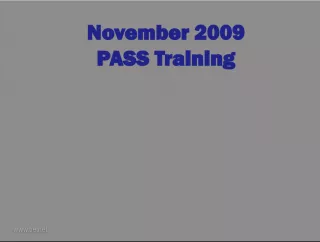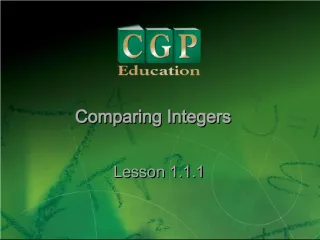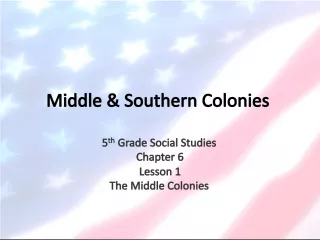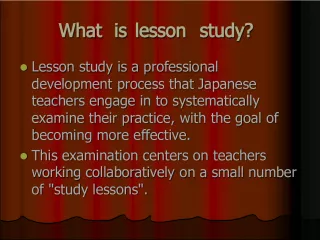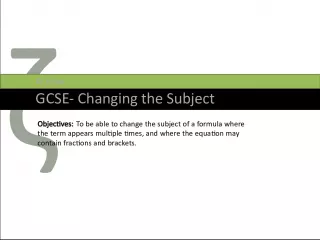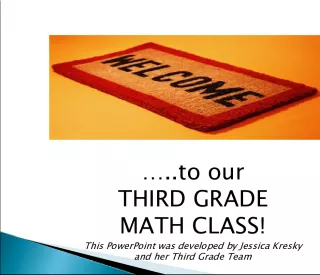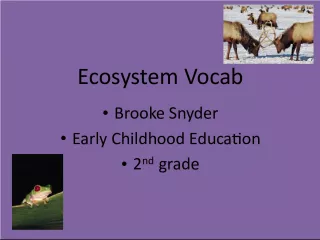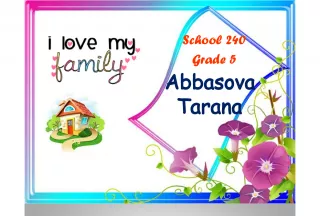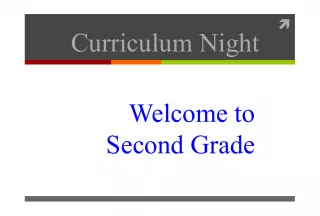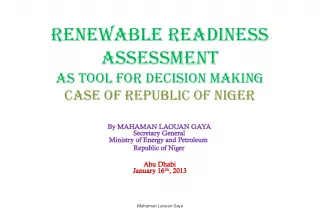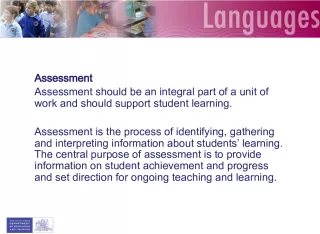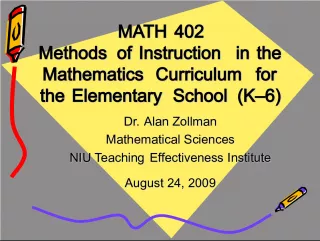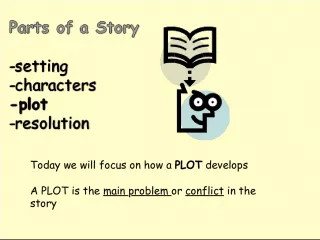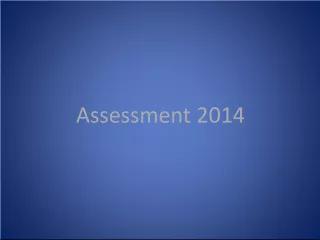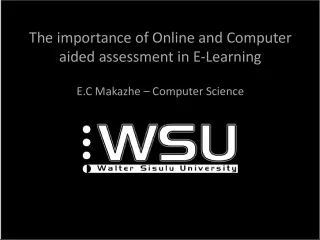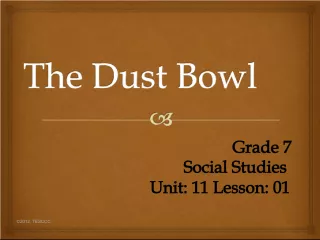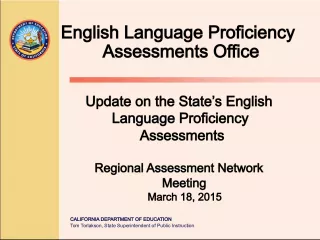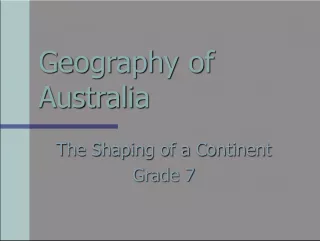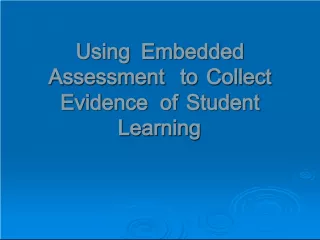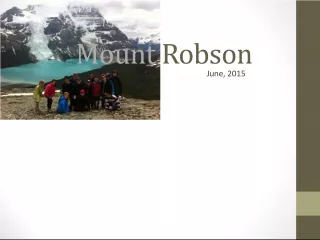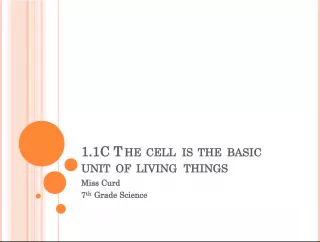SVMIConcept Development - Exploring Fifth Grade Formative Assessment Lesson on Fractions

Mariana Alwell, a professional development provider at Silicon Valley Mathematics Initiative, will guide participants to explore five key strategies of formative assessment including engineering effective classroom discussions, questions, and learning tasks that elicit evidence of learning. The session will focus on a fifth-grade formative assessment lesson concept on fractions developed by Dylan Wiliam.
- Uploaded on | 3 Views
-
 theoslawa
theoslawa
About SVMIConcept Development - Exploring Fifth Grade Formative Assessment Lesson on Fractions
PowerPoint presentation about 'SVMIConcept Development - Exploring Fifth Grade Formative Assessment Lesson on Fractions'. This presentation describes the topic on Mariana Alwell, a professional development provider at Silicon Valley Mathematics Initiative, will guide participants to explore five key strategies of formative assessment including engineering effective classroom discussions, questions, and learning tasks that elicit evidence of learning. The session will focus on a fifth-grade formative assessment lesson concept on fractions developed by Dylan Wiliam.. The key topics included in this slideshow are . Download this presentation absolutely free.
Presentation Transcript
Slide1SVMIConcept Development Lesson Common Core State Standards- Mathematics (CCSS-M) Conference Mariana Alwell Professional Development Provider Silicon Valley Mathematics Initiative
Slide2Goal of this SessionPARTICIPANTS WILL HAVE THE OPPORTUNITY TO EXPLORE A FIFTH GRADE FORMATIVE ASSESSMENT LESSON CONCEPT: FRACTIONS
Slide3There are five key strategies forFormative Assessment; one is: “ENGINEERING EFFECTIVE CLASSROOM DISCUSSIONS, QUESTIONS, AND LEARNING TASKS THAT ELICIT EVIDENCE OF LEARNING ” Dylan Wiliam
Slide4SVMI FAL: Interpreting Fractions Read through the task and answer the questions the way you think a “ typical ” student would. On the back, jot down what you think the students in your classes (or district[s] you work with) might struggle with and why . Also jot down the big mathematical ideas in this task.
Slide5SVMI FAL: Interpreting Fractions Directions to students: • Attempt this task on your own. • Answer as much as you can. Show your work so I (the teacher) can understand your reasoning. Don ’ t worry if you can ’ t do everything. There will be a lesson on this material that will help you improve your work.
Slide6SVMI FAL: Interpreting Fractions • Collect students ’ responses to the task. Make some notes on what their work reveals about their current levels of understanding and their problem solving strategies. • We suggest that teachers do not score students ’ work. The research shows that this will be counterproductive.
Slide7Introduction to Interpreting Fractions • On your mini-whiteboard show me a rectangle. • Show me a rectangle divided into two halves. • Show me a circle divided into four fourths. • Show me three fourths of this circle. Write three fourths as a fraction representing this quantity.
Slide8Introduction to Interpreting Fractions • On your mini-whiteboard show me a line having a dot at its beginning and a dot at its end. • Show me this line segment divided into four fourths. • Show me this same line segment divided into eight eighths. • Show me on this same line segment where to find seven eighths. Write the fraction representation for this quantity.
Slide9Introduction to Interpreting Fractions • On your mini-whiteboard show me a set of six buttons using circles for the buttons. • Show me a one half of this set of buttons. Write the fractional representation for this quantity. • What does this fraction represent? • Who would be willing to justify their numerical representation?
Slide10Introduction to Interpreting Fractions • On your mini-whiteboard show me a set of five tiles using a square to represent each tile. • Show me a three fifths of this set of buttons. Write the fractional representation for this quantity. • What does this fraction represent? • Who would be willing to justify their numerical representation?
Slide11There are five key strategies forFormative Assessment; one is: “CLARIFYING, SHARING, AND UNDERSTANDING LEARNING INTENTIONS AND CRITERIA FOR SUCCESS ” Dylan Wiliam
Slide12Collaborative Task(Continues with the same mathematical ideas) • Please move into groups of 2 or 3 (self selected). • Each group will be given five sets of cards: • Set A: Symbolic Notation • Set B: Area Models • Set C: Measurement Models • Set D: Set Models • Set E: Fractional Situations
Slide13Collaborative Activity• Take turns matching a fraction represented by a number with an area model . • Each time you find a match, explain your thinking clearly and carefully to your partners. • If you think there is no suitable card that matches, create one of your own. There are some blank cards for doing this . • When you have agreed all the cards, place them side-by- side on your large sheet of paper. • Find another group across the room to share your thinking with; have a discussion.
Slide14Collaborative Activity• Take turns matching a measurement model to your selected pairings from the first match of a fraction represented by a number with an area model . • Each time you find a match, explain your thinking clearly and carefully to your partners. • If you think there is no suitable card that matches, create one of your own. There are some blank cards for doing this . • When you have agreed on all the cards, place them side- by-side on your large sheet of paper. • Find another group across the room to share your thinking with; have a discussion .
Slide15There are five key strategies forFormative Assessment; one is: “PROVIDING FEEDBACK THAT MOVES LEARNING FORWARD ” Dylan Wiliam
Slide16Collaborative Activity• Take turns matching a set model to your selected pairings from of a fraction represented by a number, an area model , and a measurement model. • Each time you find a match, explain your thinking clearly and carefully to your partners. • If you think there is no suitable card that matches, create one of your own. There are some blank cards for doing this . • When you have agreed on all the cards, place them side- by-side on your large sheet of paper.
Slide17Collaborative Activity• Take turns matching a fractional situation to your selected pairings from of a fraction represented by a number, an area model , a measurement model , and a set model. • Each time you find a match, explain your thinking clearly and carefully to your partners. • If you think there is no suitable card that matches, create one of your own. There are some blank cards for doing this . • When you have agreed on all the cards, place them side- by-side on your large sheet of paper.
Slide18There are five key strategies forFormative Assessment; one is: INTRODUCTIONS “ACTIVATING STUDENTS AS INSTRUCTIONAL RESOURCES FOR EACH OTHER ” Dylan Wiliam
Slide19Collaborative Activity: Teacher’ s Role Teachers are to: • Listen and watch students carefully. • Note different student approaches to the task. • Notice any difficulties that students encounter, and the ways they justify and explain to each other. • Try not to make suggestions that move students towards a particular approach to the task. Instead, ask questions that help students to clarify and promote thinking.
Slide20Please post completed posters. Which cards were easiest? Why? How did you decide which cards to match? How can you justify why the different types of models convey the same fractional part? Whole Class Discussion
Slide21Plenary DiscussionWrite the fractions represented by a number with each representation. On your mini-whiteboard: • Show me three fourths of a whole rectangle. • Now, show me three fourths of a set of sticks. • Show me two thirds of a folded paper stip. • Now, show me two thirds of a set of hearts. • Show me one and one quarter pizzas. • Now, show me one and one quarter on a number line.
Slide22SVMI FAL: Interpreting Fractions Directions to students: • “ Please do this task on your own. ” • Teacher collects tasks to take notes on students ’ thinking. • “ Look at your original work with the feedback questions. ” • “ What have you learned from doing this lesson? ” • “ What are you still struggling with? ”
Slide23There are five key strategies forFormative Assessment; one is: TI ” ACTIVATING LEARNERS AS THE OWNERS OF THEIR OWN LEARNING ” Dylan Wiliam
Slide24What mathematics can students learn, or deepen their understanding of, with this lesson? What may they struggle with in this lesson? How is the lesson designed to support struggling students? How is this lesson like and different from what goes on in your district ’ s mathematics classrooms? What do you think are the benefits of using a lesson like this? What can teachers learn about their students from using lessons like this? What can students learn about themselves from lessons like this? Lesson Analysis/Reflection
Slide25Links to Common Core StandardsMathematical Content Number and Operations with Fractions 3.G.A. 2: Partition shapes into parts with equal areas 3.NF.A.1, 2, 3: Develop understanding of fractions as numbers 4.NF.A.1 & 2: Extend understanding of fraction equivalence and ordering Mathematical Practice 1. Can explain correspondences and relationships and draw diagrams to help conceptualize and solve a problem.
Slide26Lesson: The pre-assessment task and the lesson activities are exemplars of the CCSS (content and Practice Standards which have high DOK levels). Feedback: The lesson provides opportunities for both teachers and students to gather information about their mathematical understanding/skills. Feedback is given to push thinking and learning forward. Thus, there are no value judgments made or grades given. Revisions: There are opportunities for students to revise/advance their thinking and their work. Timing: Formative assessment is happening during instruction where there is still time to adapt the lesson to meet the needs of the students. The Structure of Formative Assessment Concept Lessons 26
Slide27Questions, Comments, ConcernsAfter looking at a Formative Assessment Concept Lesson, what questions, comments or concerns do you have? About the lesson? Implementation of these lessons in classrooms?
Slide28SILICON VALLEY MATHEMATICSINITIATIVE (SVMI) OPEN SOURCE: WWW.INSIDEMATHEMATICS.ORG WWW.DEBBIEWAGGONER.COM “ Classroom Challenges ” formative assessment lesson materials
